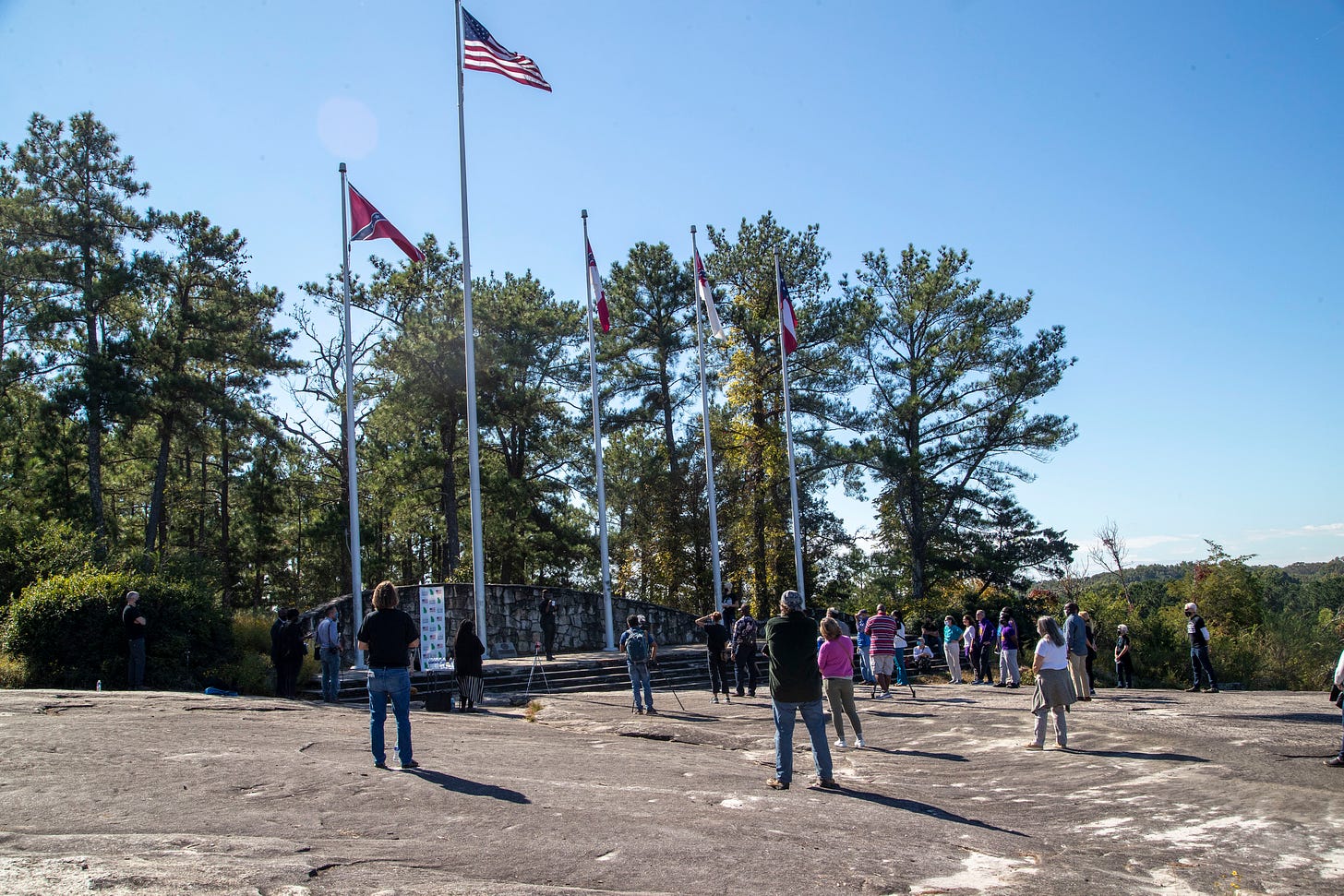The Fundamental Problem at Stone Mountain
Four Confederate flags have been relocated at the site of the largest Confederate monument in the world, but a larger problem persists.
Last week, ahead of the Memorial Day Weekend, the Stone Mountain Memorial Association relocated four Confederate flags from a prominent location to Valor Park, an alcove at the base of the giant carving of Confederate leaders in granite on the mountain’s northern face.
The decision to relocate the flags was made two years ago, which is an indication of just how slow change has been at the controversial Confederate memorial. The Confederate flags were donated by the United Daughters of the Confederacy and went up in the early 1960s during the height of the civil rights era and following the state’s decision to complete the carving begun decades earlier by Gutzon Borglum.
The decision to complete the carving during this time was a clear response to the perceived encroachments by the federal government against segregation and brought to completion a symbol of white supremacy at a site long embraced by the Ku Klux Klan.
The decision to relocate the flags has won approval by local activist organizations, but it points to a fundamental problem at Stone Mountain that will need to be resolved if it has any hopes of transforming this site into a museum and education center.
In 2021, Gov. Brian Kemp appointed the first-ever Black chairman of the Stone Mountain Memorial Association board, which approved changes including a new exhibit planned to explore the park’s Lost Cause history and its close ties to white supremacy in Georgia. This year’s state budget contains $11 million in bond funding for the exhibit, which Warner Museums has been contracted to design.
Reinterpretation at Stone Mountain Moves Forward
A state law that protects Confederate monuments prevents the flags from being removed entirely but says they can be moved to an equally prominent location.
This will remain a thorn in the side of any plans to transform Stone Mountain from a site which celebrates the Confederacy to one that educates the public.
The law will have to be changed giving the SMMA the authority to manage all of its cultural assets. As long as Confederate flags are protected by state law, the site will be viewed as promoting a pro-Confederate story, regardless of the changes that take place.
There is no room for compromise.
Stone Mountain cannot exist as a welcoming place for the Sons of Confederate Veterans and other right-wing extremists and as an educational site that attempts to place the massive carving and its history of white supremacy in historical context.
I understand that change is going to be slow and I want to support this project, not because I necessarily believe that the carving should be preserved, but because I acknowledge the reality that it is going to remain for the foreseeable future. A new museum and educational center is the best alternative and I believe that it can do some good.
But Gov. Kemp and other elected leaders will, at some point, need to confront the tough questions about the management of Stone Mountain.
Simply put: you can’t play a political game of bothsidesism here.






Interestingly, the initial Borglum plan for the carving portrays a group of Confederate cavalrymen, not the Confederate leadership.